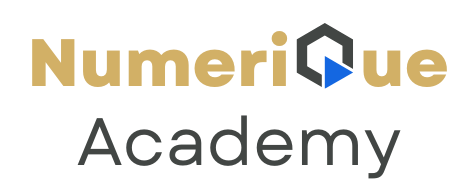Whether you’re just starting your journey in web development or you’re looking to land your first job or freelance client, having a strong portfolio is essential. It’s not just about demonstrating that you can code—it’s about showing you can solve real problems with real-world applications.
In this post, we’ll explore 10 hands-on project ideas that will level up your skills and impress potential employers or clients.
1. Personal Portfolio Website
Why it matters: It’s the first project every developer should build—and the one you’ll constantly update.
What to include:
- Bio and resume
- Skills and tech stack
- Project showcases with live links
- Contact form (bonus points for backend integration)
Tip: Use modern frameworks like React or Vue, and host it on GitHub Pages, Vercel, or Netlify.
2. E-Commerce Product Page or Storefront
Why it matters: E-commerce is one of the most in-demand web applications.
Key features:
- Product listings and filtering
- Cart functionality with local storage
- Responsive UI
- Backend with product and order management (Node.js or Firebase)
Bonus: Integrate Stripe or PayPal for a full-stack payment flow.
3. To-Do List with Authentication
Why it matters: It’s a classic beginner project—but adding login and persistent storage makes it job-ready.
What to include:
- CRUD functionality (Create, Read, Update, Delete)
- User registration and login (JWT or Firebase Auth)
- Data saved to a backend or cloud DB
Tip: Use MongoDB or PostgreSQL to store tasks.
4. Blog or CMS (Content Management System)
Why it matters: Blogs demonstrate backend knowledge and content structures.
Key features:
- Rich text editor
- Admin dashboard to publish/edit posts
- Public-facing blog with pagination
- User roles (Admin vs Reader)
Bonus: Use Next.js for static site generation and SEO optimization.
5. Event Booking Platform
Why it matters: It mimics real SaaS or marketplace platforms.
Features:
- Event listings
- Booking/reservation system
- Admin panel for event creation
- Email confirmations using NodeMailer or similar tools
Great for: Showcasing complex data relationships and date handling.
6. Interactive Map with Location Search
Why it matters: Combines APIs and UX-rich interfaces.
What to include:
- Use Google Maps API or Leaflet.js
- Display search results based on location
- Filter by distance, categories, etc.
Tip: Integrate with a real dataset, like nearby restaurants or coworking spaces.
7. News Aggregator with External APIs
Why it matters: Shows you can work with third-party APIs.
Features:
- Use APIs like NewsAPI or Reddit
- Filter by topic, source, or keyword
- Responsive grid layout
Bonus: Add light/dark theme toggling and bookmarking features.
8. Admin Dashboard with Charts and Tables
Why it matters: Many real-world apps include admin UIs.
Key elements:
- Data tables (filter, search, sort)
- Dynamic charts using Chart.js or D3.js
- Authentication and access control
This is great for showcasing frontend frameworks like Angular or Vue.
9. Media Streaming UI Clone (e.g., Netflix or Spotify)
Why it matters: Demonstrates design skills and user interactivity.
What to build:
- Browse interface with thumbnails
- Audio or video player (using HTML5 elements or libraries)
- Search and filtering
Tip: You can use dummy JSON data or free APIs like Deezer for real content.
10. Weather App with Geolocation
Why it matters: A classic API project with a twist.
Core features:
- Use OpenWeatherMap API
- Show weather based on user’s current location
- Responsive UI with animations or icons
Bonus: Add hourly and weekly forecasts using tab navigation.
Final Thoughts
Building a few of these projects—especially when you go beyond tutorials and customize features—can help you stand out in a crowded field. When adding them to your portfolio:
- Write a short case study for each (what tech was used, what challenges you faced, what you learned)
- Link to the live demo and GitHub repo
- Explain the value of the project (not just how, but why you built it)

